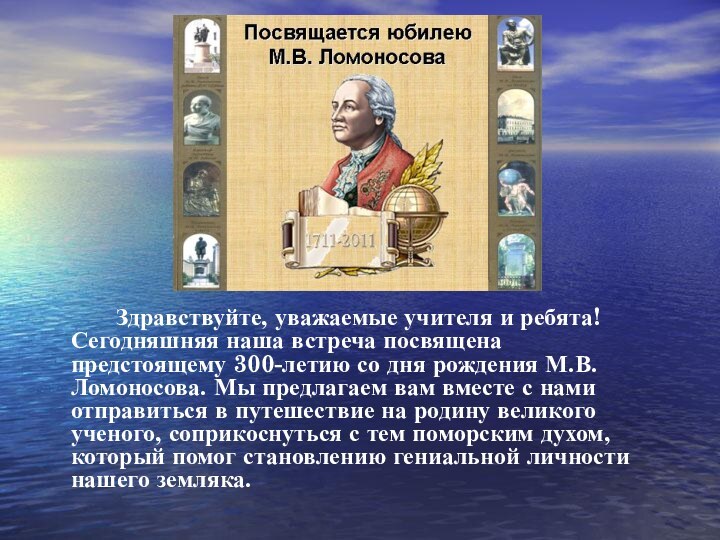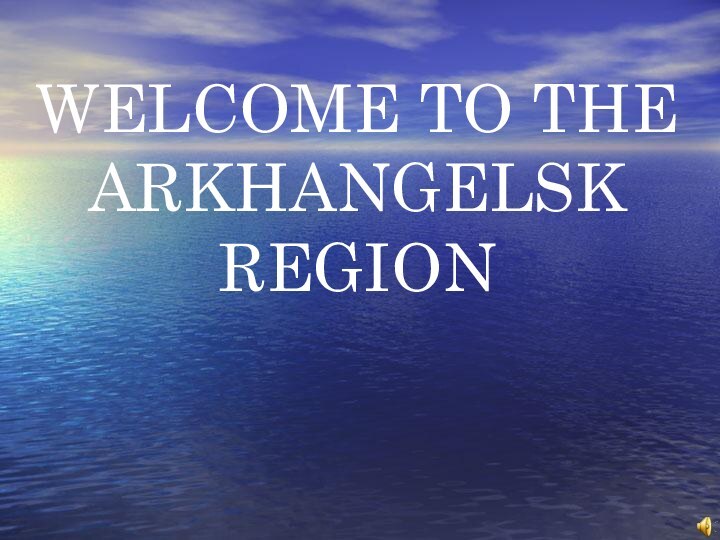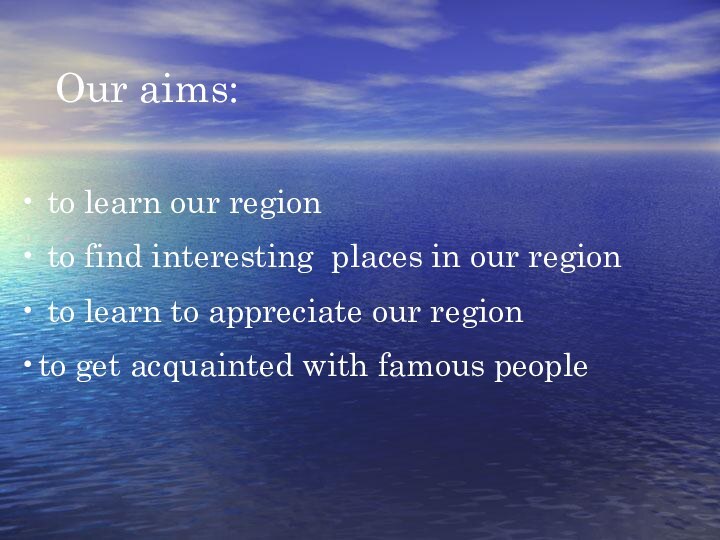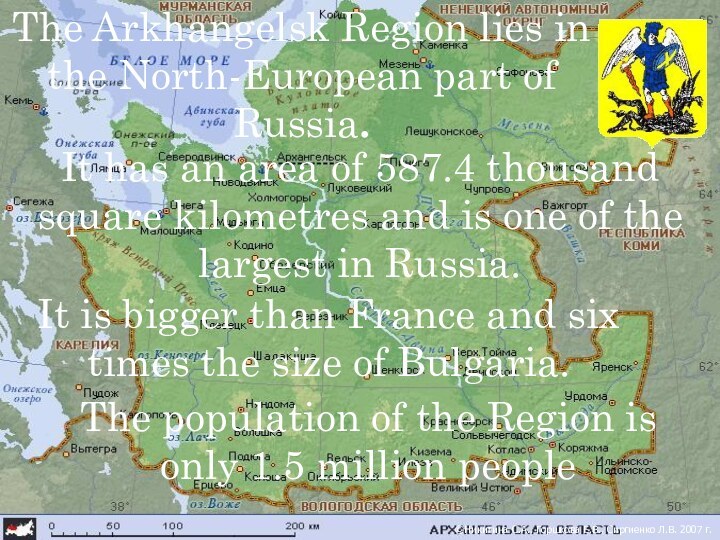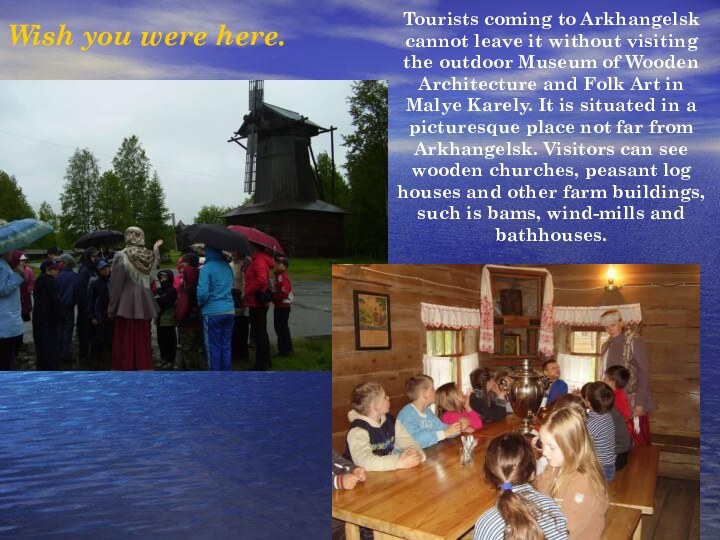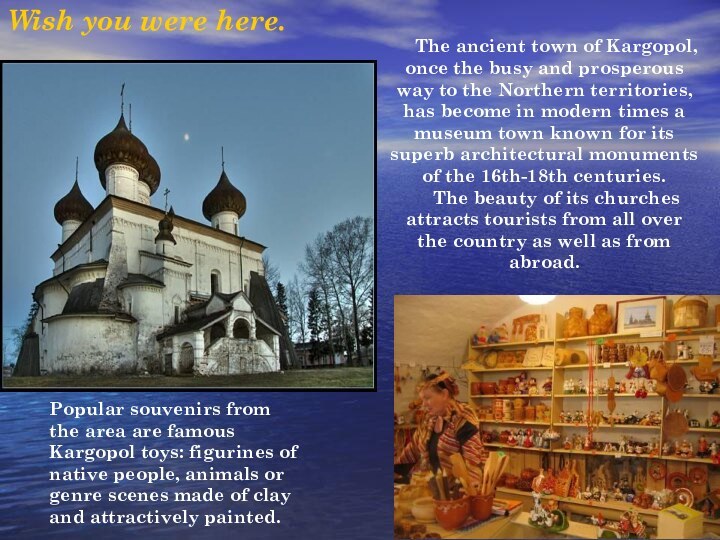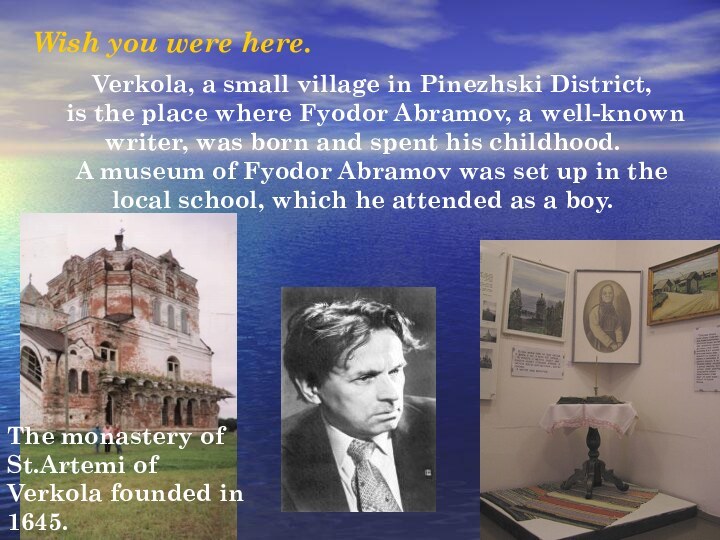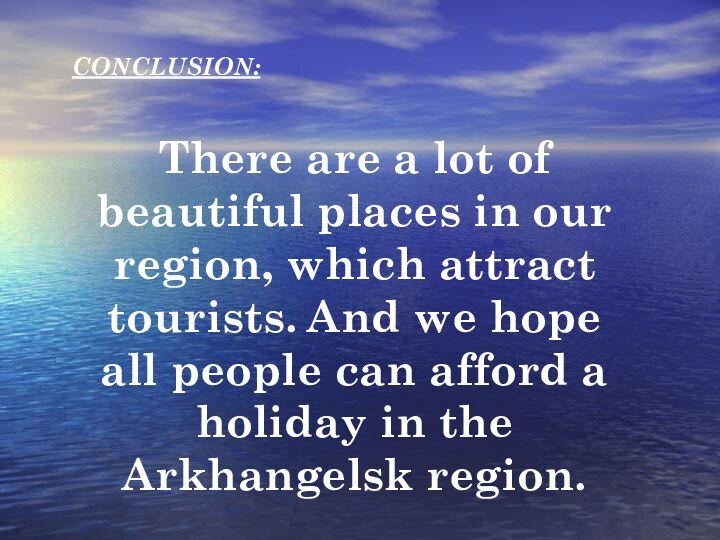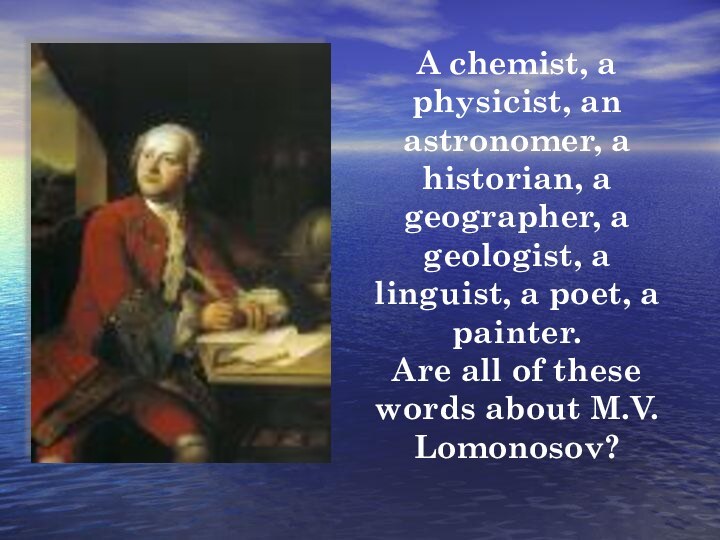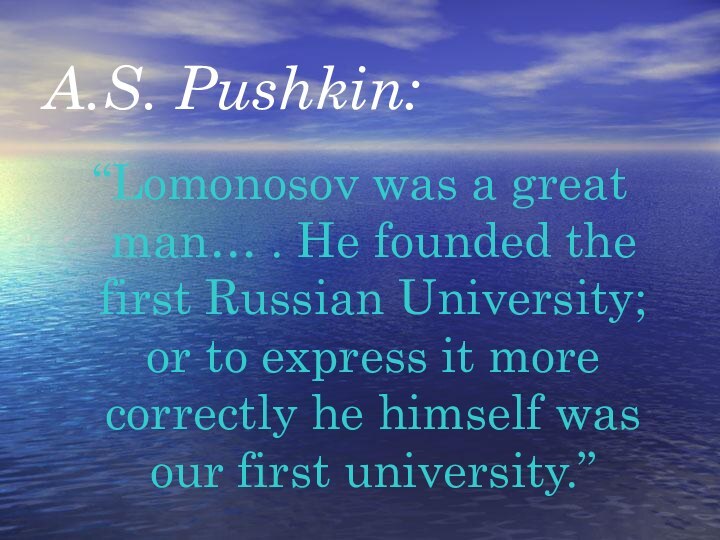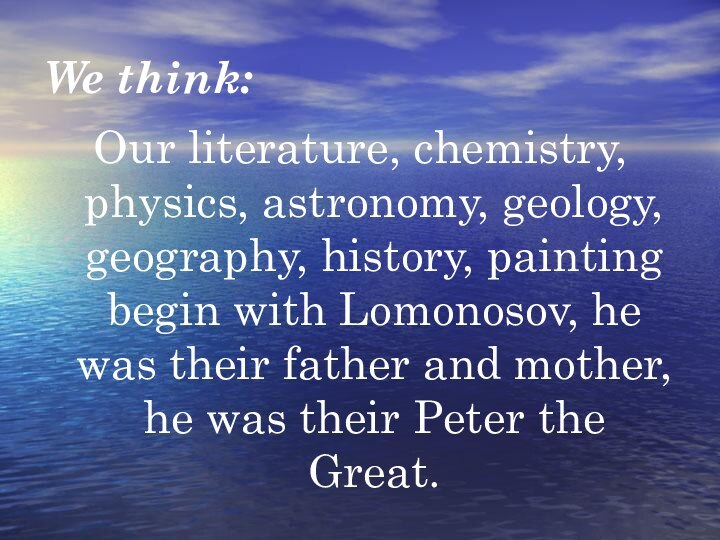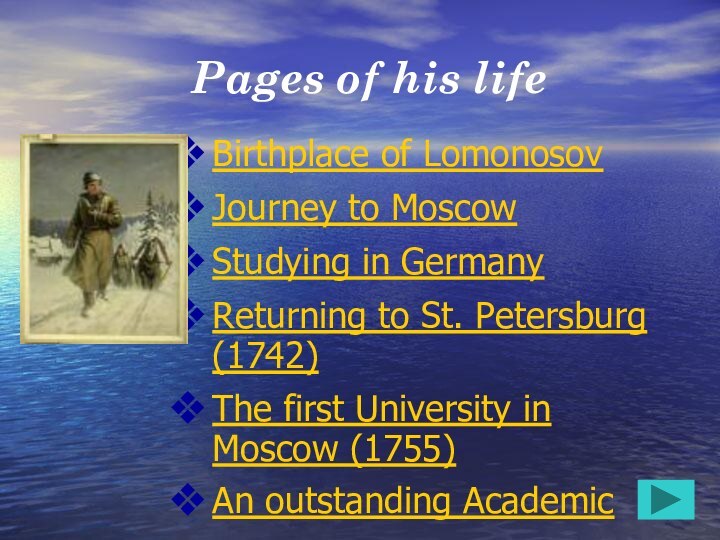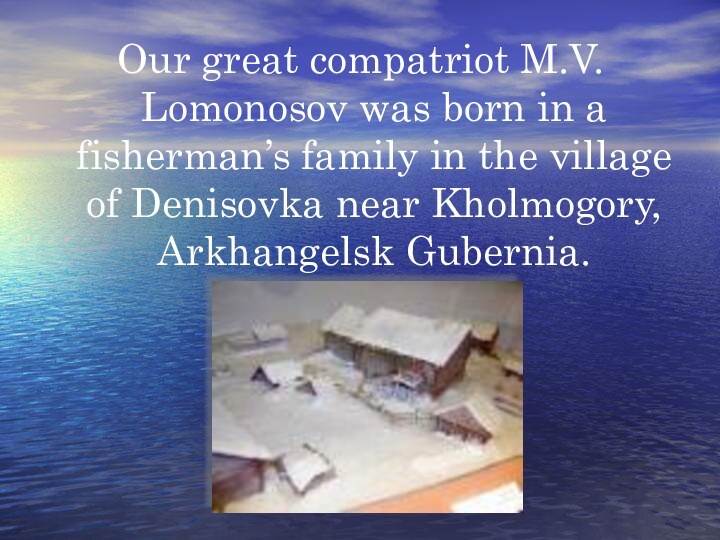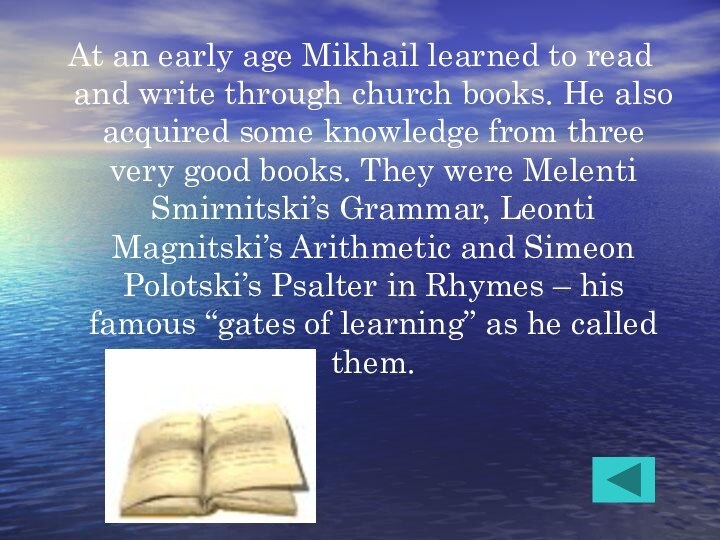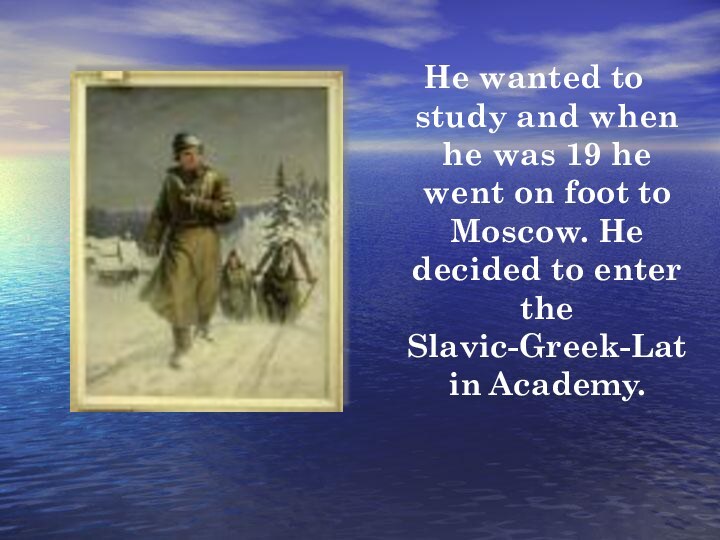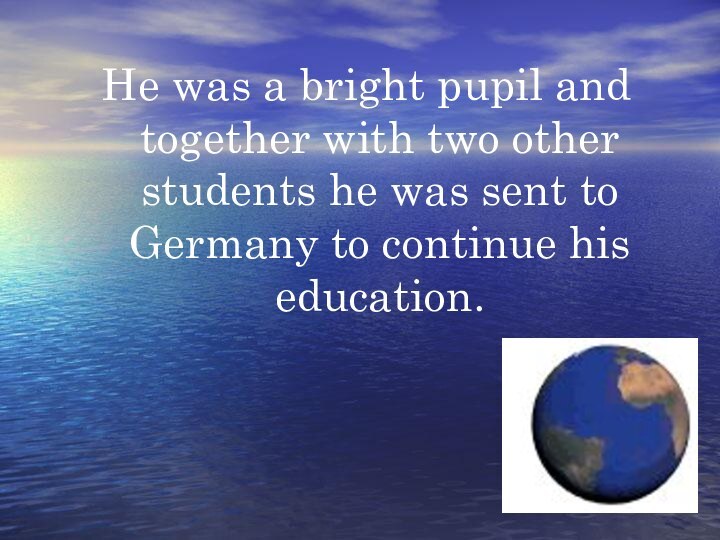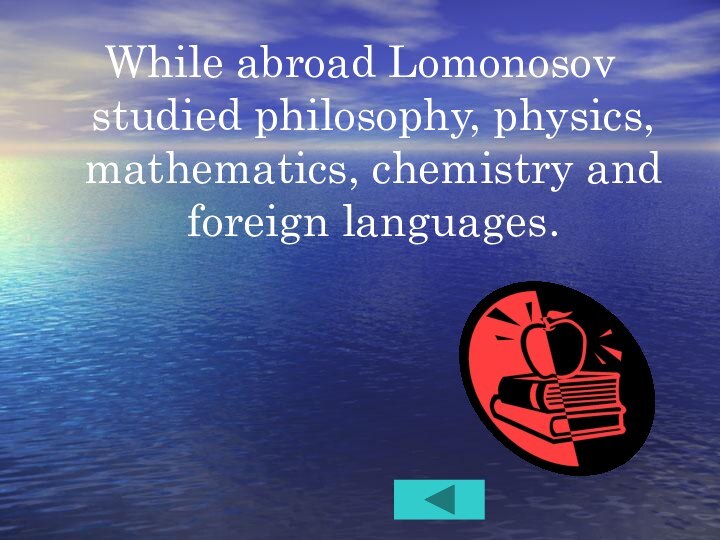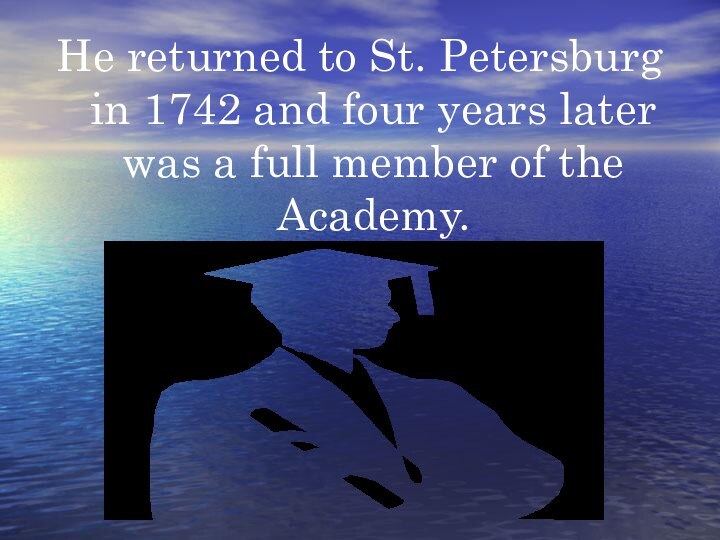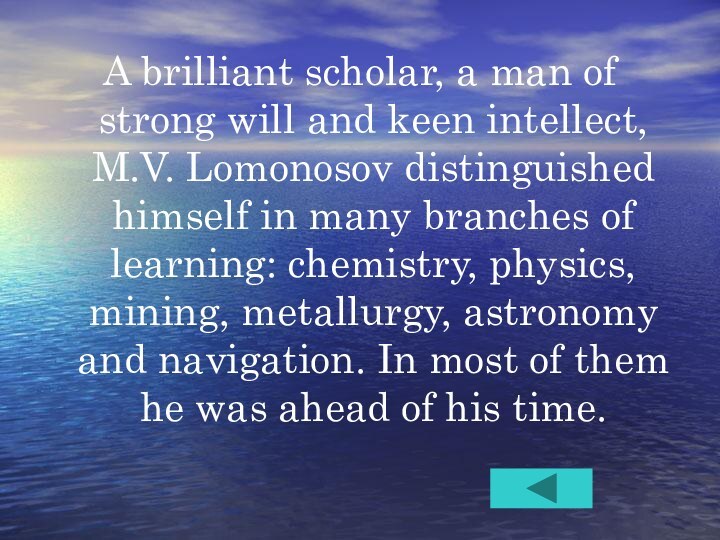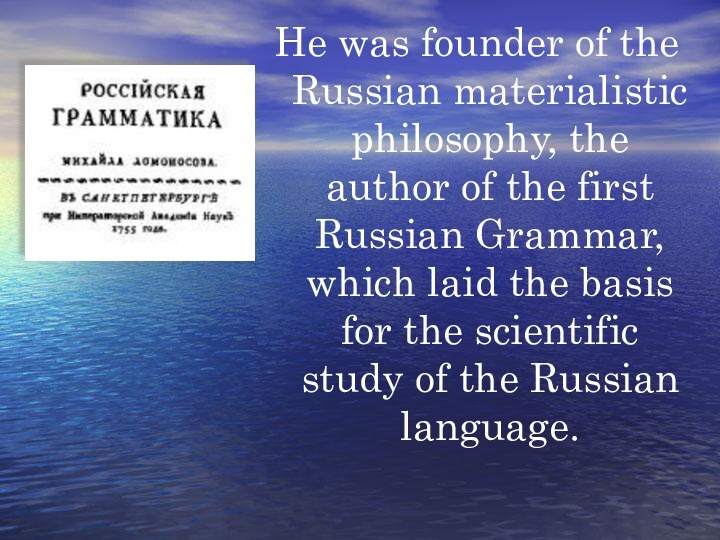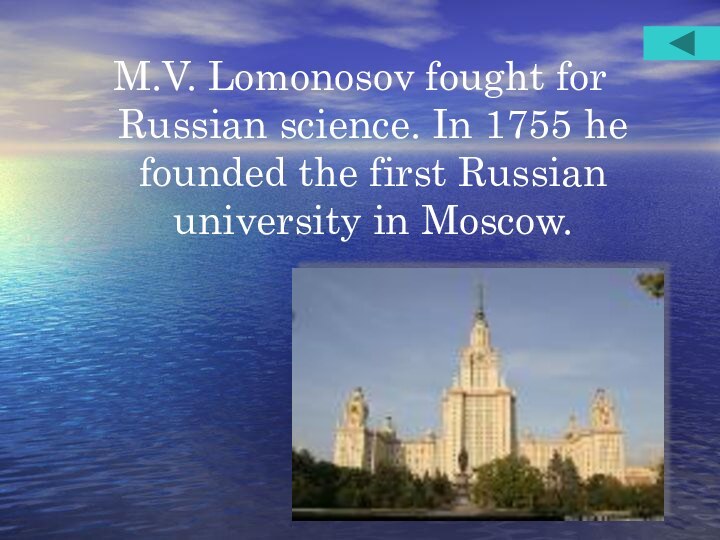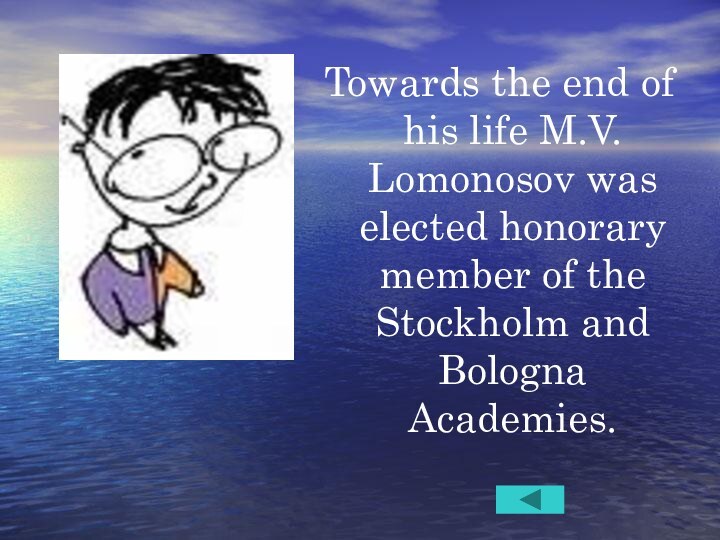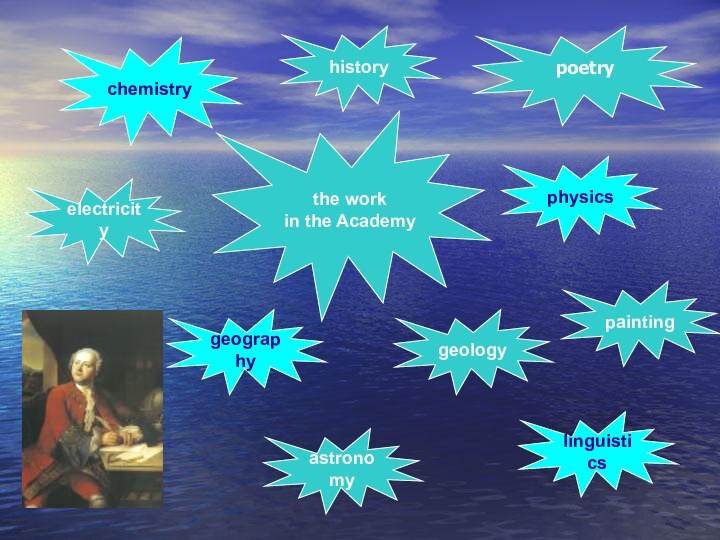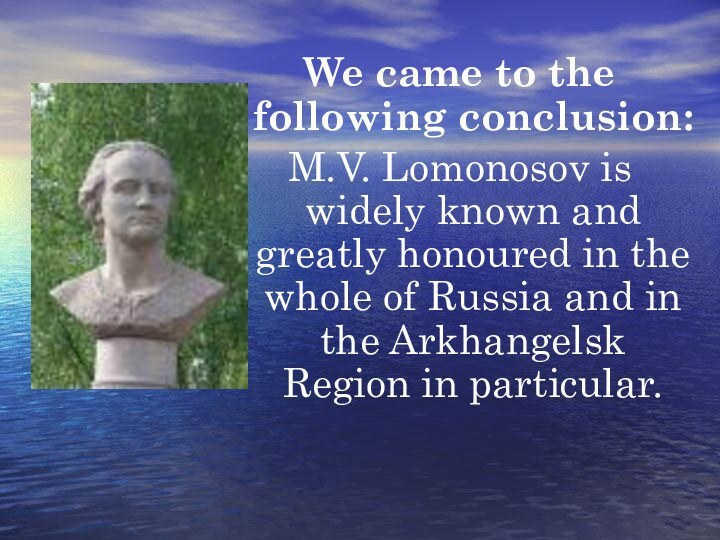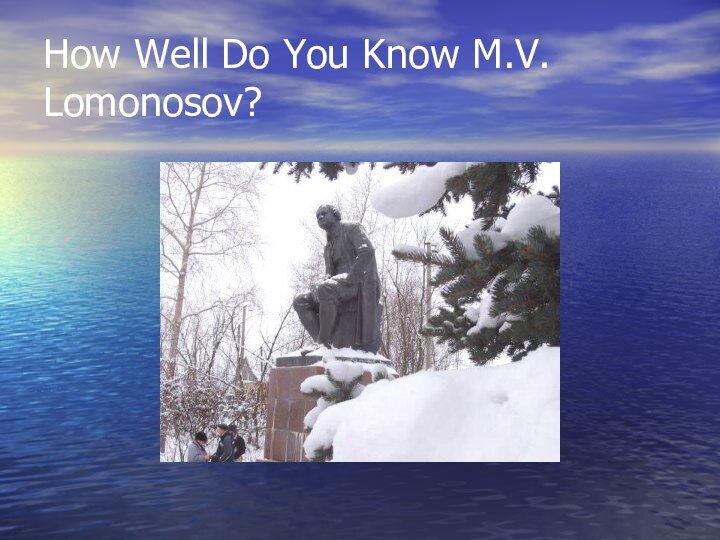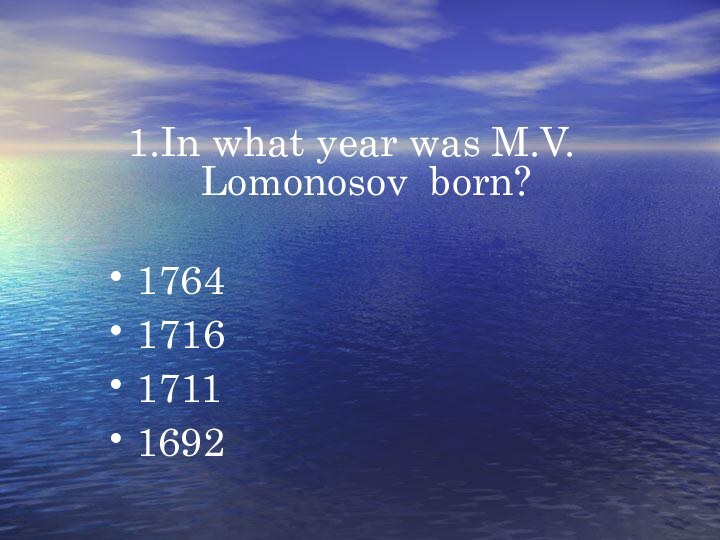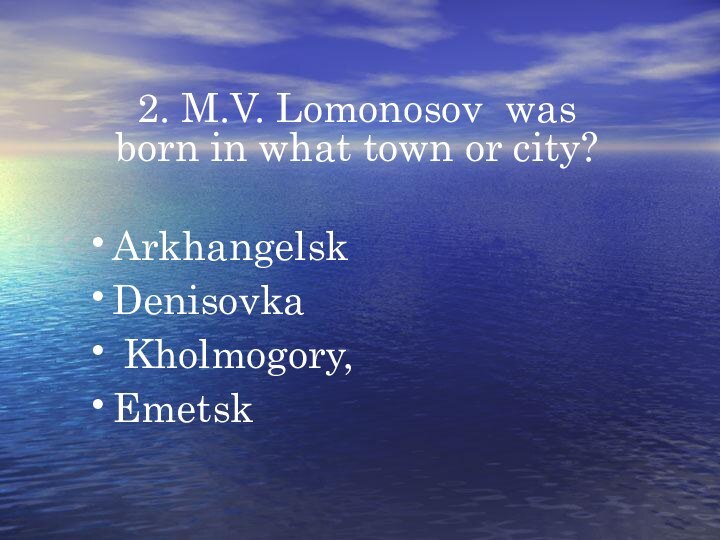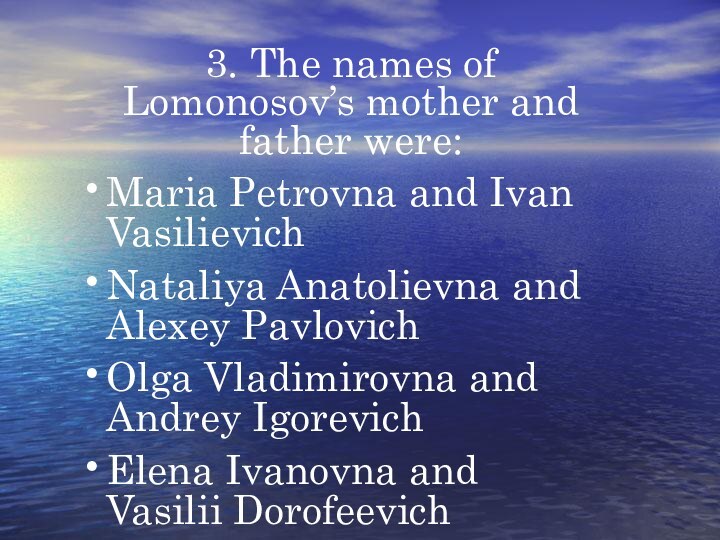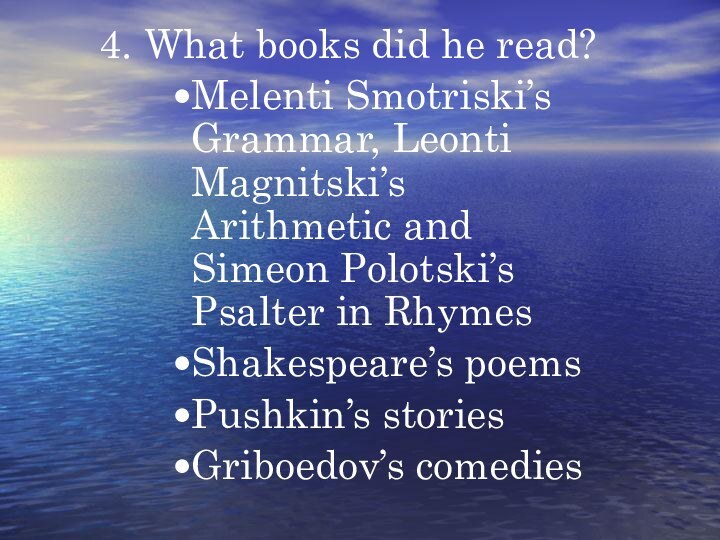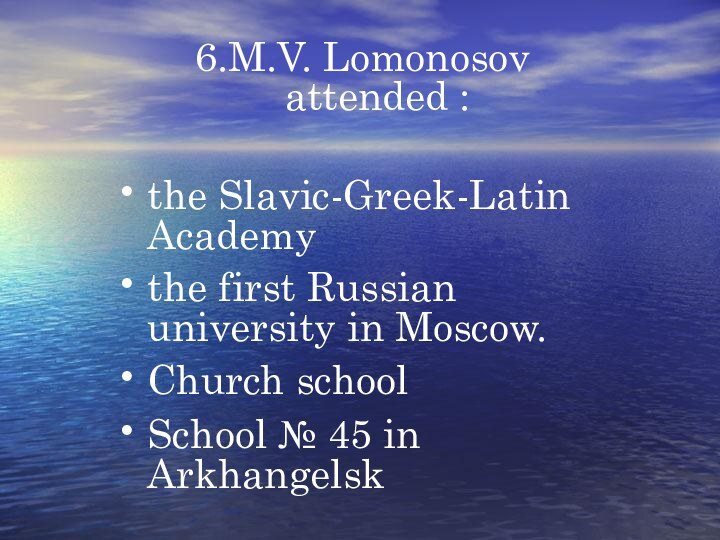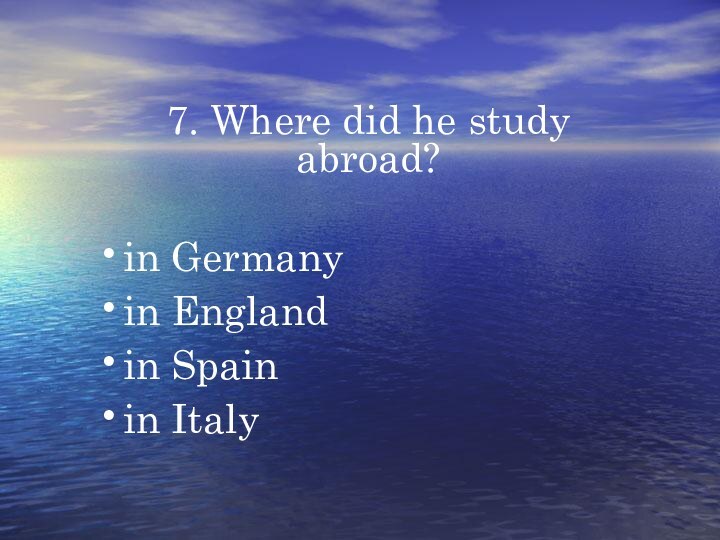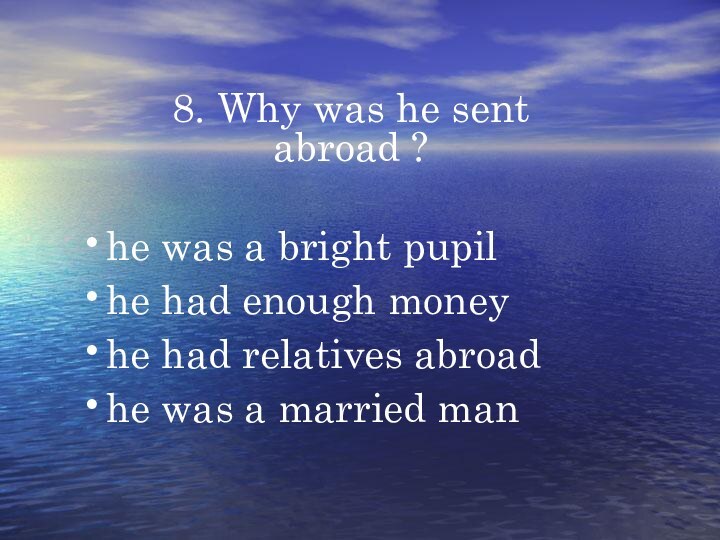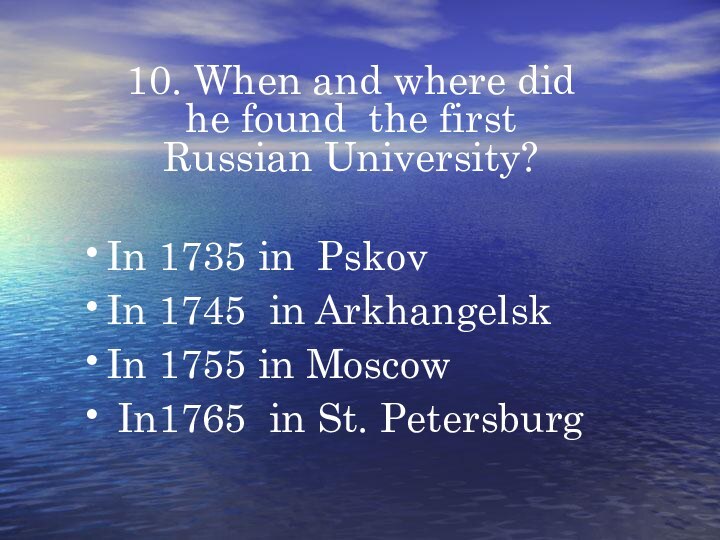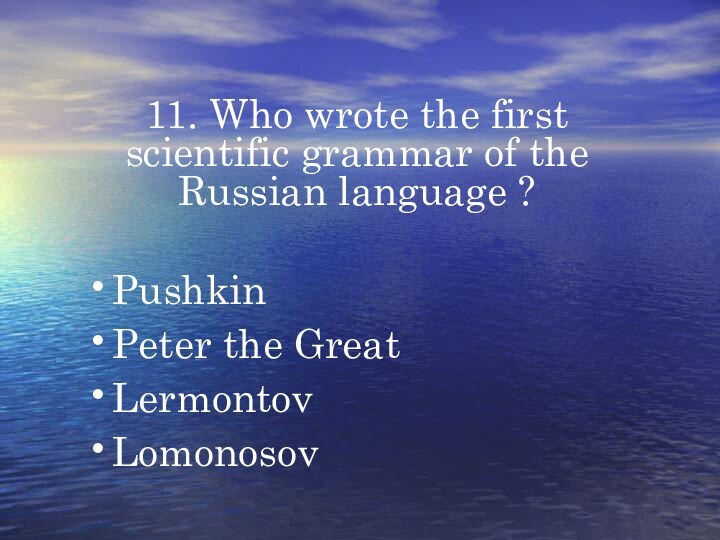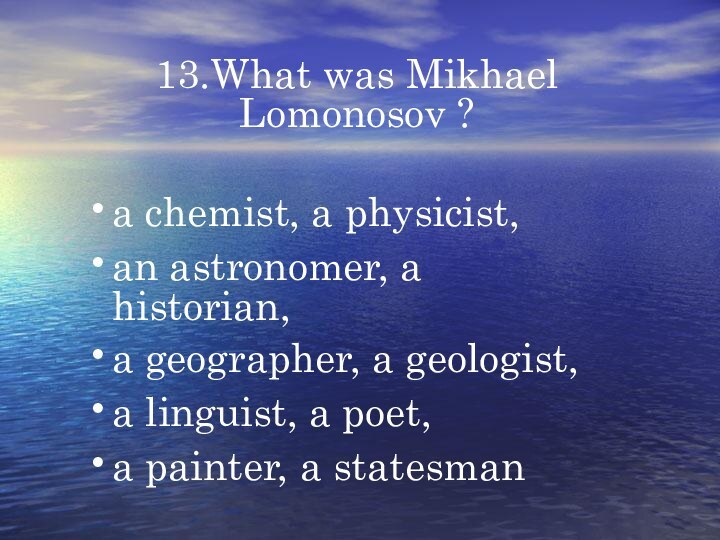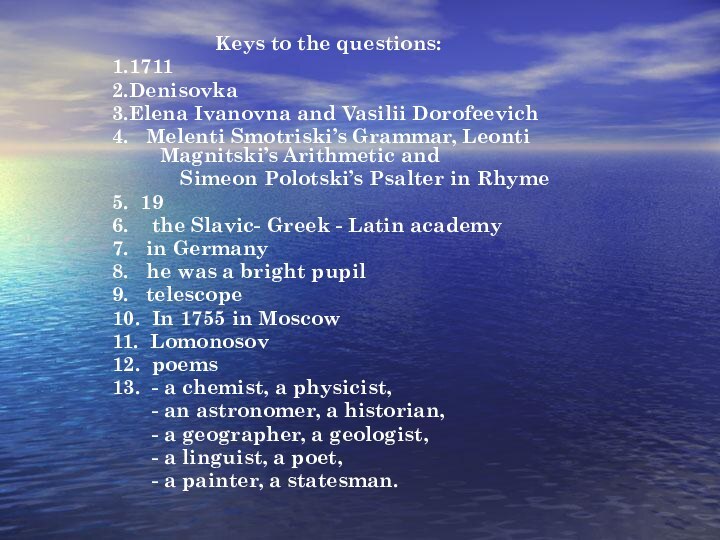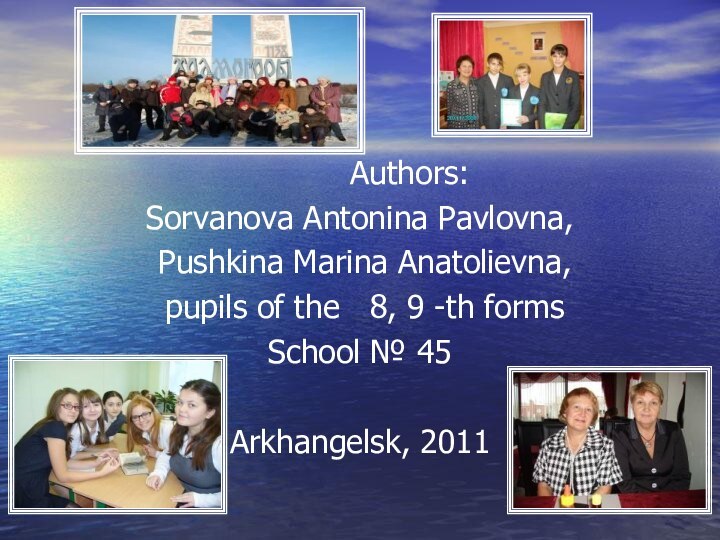Слайд 2
WELCOME TO THE ARKHANGELSK REGION
Слайд 3
to learn our region
to find
interesting places in our region
to learn to appreciate
our region
to get acquainted with famous people
Our aims:
Слайд 4
The Arkhangelsk Region lies in the North-European part
of Russia.
It has an area of 587.4 thousand
square kilometres and is one of the largest in Russia.
It is bigger than France and six times the size of Bulgaria.
The population of the Region is only 1.5 million people
©Никитина С.А., Горшкова Е.В., Сиргиенко Л.В. 2007 г.
Слайд 5
Wish you were here.
The Solovetsky Archipelago (Solovki) is
situated in the White Sea and consists of six
large and over 100 smaller islands.
Solovki is justly considered to be the gem of the White Sea. It is unique in its nature and historical background.
The main tourist attraction of the archipelago is the Solovetski Monastery founded at the beginning of the 15th century by two monks-hermits Sawati and Zossima.
Слайд 6
Wish you were here.
Tourists coming to Arkhangelsk cannot
leave it without visiting the outdoor Museum of Wooden
Architecture and Folk Art in Malye Karely. It is situated in a picturesque place not far from Arkhangelsk. Visitors can see wooden churches, peasant log houses and other farm buildings, such is bams, wind-mills and bathhouses.
Слайд 7
Wish you were here.
The ancient town of Kargopol,
once the busy and prosperous way to the Northern
territories, has become in modern times a museum town known for its superb architectural monuments of the 16th-18th centuries.
The beauty of its churches attracts tourists from all over the country as well as from abroad.
Popular souvenirs from the area are famous Kargopol toys: figurines of native people, animals or genre scenes made of clay and attractively painted.
Слайд 8
Wish you were here.
The Antoniev-Siysky Monastery is
located in a picturesque landscape amidst beautiful lakes.
Слайд 9
Wish you were here.
Yemetsk is a small town,
the birthplace of Nikolay Rubtsov, a well-known Russian poet.
Слайд 10
Wish you were here.
Verkola, a small village in
Pinezhski District,
is the place where Fyodor Abramov, a well-known
writer, was born and spent his childhood.
A museum of Fyodor Abramov was set up in the local school, which he attended as a boy.
The monastery of St.Artemi of Verkola founded in 1645.
Слайд 11
Wish you were here.
.
M. Lomonosov's house-museum was set
up in the village of Lomonosovo near Kholmogory
Museum exhibits
tell the visitors about different periods in the scientist's life and different spheres of his interest.
Слайд 12
CONCLUSION:
There are a lot of beautiful places in
our region, which attract tourists. And we hope all
people can afford a holiday in the Arkhangelsk region.
Слайд 13
A chemist, a physicist, an astronomer, a historian,
a geographer, a geologist, a linguist, a poet, a
painter.
Are all of these words about M.V. Lomonosov?
Слайд 14
A.S. Pushkin:
“Lomonosov was a great man… . He
founded the first Russian University; or to express it
more correctly he himself was our first university.”
Слайд 15
We think:
Our literature, chemistry, physics, astronomy, geology, geography,
history, painting begin with Lomonosov, he was their father
and mother, he was their Peter the Great.
Слайд 16
Pages of his life
Birthplace of Lomonosov
Journey to Moscow
Studying
in Germany
Returning to St. Petersburg (1742)
The first University in
Moscow (1755)
An outstanding Academic
Слайд 17
Our great compatriot M.V. Lomonosov was born in
a fisherman’s family in the village of Denisovka near
Kholmogory, Arkhangelsk Gubernia.
Слайд 18
At an early age Mikhail learned to read
and write through church books. He also acquired some
knowledge from three very good books. They were Melenti Smirnitski’s Grammar, Leonti Magnitski’s Arithmetic and Simeon Polotski’s Psalter in Rhymes – his famous “gates of learning” as he called them.
Слайд 19
He wanted to study and when he was
19 he went on foot to Moscow. He decided
to enter the Slavic-Greek-Latin Academy.
Слайд 20
He entered the Slavonic-Greek –Latin Academy. In a
short period of time Lomonosov mastered Latin and Greek
and acquainted himself with ancient and contemporary European literature and science.
Слайд 21
He was a bright pupil and together with
two other students he was sent to Germany to
continue his education.
Слайд 22
While abroad Lomonosov studied philosophy, physics, mathematics, chemistry
and foreign languages.
Слайд 23
He returned to St. Petersburg in 1742 and
four years later was a full member of the
Academy.
Слайд 24
A brilliant scholar, a man of strong will
and keen intellect, M.V. Lomonosov distinguished himself in many
branches of learning: chemistry, physics, mining, metallurgy, astronomy and navigation. In most of them he was ahead of his time.
Слайд 25
He was founder of the Russian materialistic philosophy,
the author of the first Russian Grammar, which laid
the basis for the scientific study of the Russian language.
Слайд 26
M.V. Lomonosov fought for Russian science. In 1755
he founded the first Russian university in Moscow.
Слайд 27
Towards the end of his life M.V. Lomonosov
was elected honorary member of the Stockholm and Bologna
Academies.
Слайд 28
the work
in the Academy
poetry
geography
linguistics
astronomy
physics
geology
painting
history
chemistry
electricity
Слайд 29
We came to the following conclusion:
M.V. Lomonosov is
widely known and greatly honoured in the whole of
Russia and in the Arkhangelsk Region in particular.
Слайд 30
How Well Do You Know M.V. Lomonosov?
Слайд 31
1.In what year was M.V. Lomonosov born?
1764
1716
1711
1692
Слайд 32
2. M.V. Lomonosov was born in what town
or city?
Arkhangelsk
Denisovka
Kholmogory,
Emetsk
Слайд 33
3. The names of Lomonosov’s mother and father
were:
Maria Petrovna and Ivan Vasilievich
Nataliya Anatolievna and Alexey Pavlovich
Olga
Vladimirovna and Andrey Igorevich
Elena Ivanovna and Vasilii Dorofeevich
Слайд 34
4. What books did he read?
Melenti Smotriski’s Grammar,
Leonti Magnitski’s Arithmetic and Simeon Polotski’s Psalter in Rhymes
Shakespeare’s
poems
Pushkin’s stories
Griboedov’s comedies
Слайд 35
5. How old was Lomonosov when he went
to Moscow?
19
20
21
22
Слайд 36
6.M.V. Lomonosov attended :
the Slavic-Greek-Latin Academy
the first
Russian university in Moscow.
Church school
School № 45 in Arkhangelsk
Слайд 37
7. Where did he study abroad?
in Germany
in England
in
Spain
in Italy
Слайд 38
8. Why was he sent abroad ?
he was
a bright pupil
he had enough money
he had relatives abroad
he
was a married man
Слайд 39
9. Lomonosov built a…
telephone
telegraph
camera
telescope
Слайд 40
10. When and where did he found the
first Russian University?
In 1735 in Pskov
In 1745 in Arkhangelsk
In
1755 in Moscow
In1765 in St. Petersburg
Слайд 41
11. Who wrote the first scientific grammar of
the Russian language ?
Pushkin
Peter the Great
Lermontov
Lomonosov
Слайд 42
12. What did Lomonosov write ?
novels
sonnets
reports
poems
Слайд 43
13.What was Mikhael Lomonosov ?
a chemist, a physicist,
an
astronomer, a historian,
a geographer, a geologist,
a linguist,
a poet,
a painter, a statesman
Keys to the questions:
1.1711
2.Denisovka
3.Elena Ivanovna and Vasilii
Dorofeevich
4. Melenti Smotriski’s Grammar, Leonti Magnitski’s Arithmetic and
Simeon Polotski’s Psalter in Rhyme
5. 19
6. the Slavic- Greek - Latin academy
7. in Germany
8. he was a bright pupil
9. telescope
10. In 1755 in Moscow
11. Lomonosov
12. poems
13. - a chemist, a physicist,
- an astronomer, a historian,
- a geographer, a geologist,
- a linguist, a poet,
- a painter, a statesman.
Слайд 45
We can advise you:
To be proud of our
countryman and develop his theories.
To get profound knowledge
at school and become an outstanding many-sided personality.
